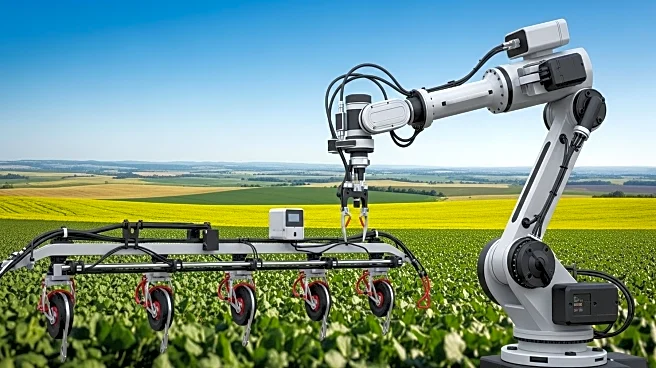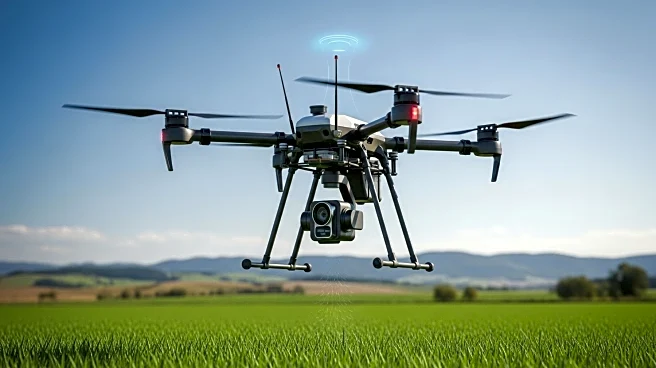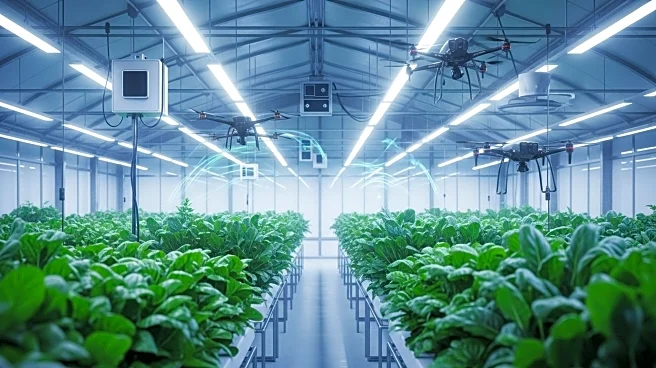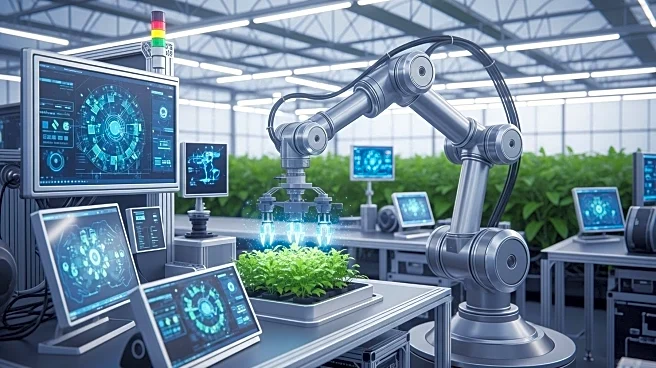What is the story about?
What's Happening?
The North America Robotics in Agriculture Market is experiencing significant growth, driven by precision farming and labor shortages. Key players such as AGCO Corporation, Deere & Company, and Trimble Inc. are leading the charge in automating agricultural tasks like harvesting, spraying, and weeding. The market, valued at $15.78 billion in 2024, is projected to reach $84.19 billion by 2032, with a compound annual growth rate of 23.28%. This expansion is fueled by the demand for efficiency and sustainability in farming practices, as well as the deployment of AI-powered robotic harvesters in U.S. farms to address labor shortages and optimize crop yields.
Why It's Important?
The growth of robotics in agriculture is crucial for addressing labor shortages and enhancing precision farming techniques. This technological advancement promises to reduce labor costs and improve crop yields, benefiting farmers and agricultural cooperatives. The adoption of agricultural robots also supports sustainable farming practices by minimizing the use of herbicides and promoting efficient resource management. As the market expands, stakeholders such as farmers, agri-tech companies, and government bodies stand to gain from increased productivity and food security.
What's Next?
The U.S. Department of Agriculture has announced $120 million in funding for precision ag robotics, which will further boost the sector's growth. Companies like John Deere and Carbon Robotics are expected to continue innovating, with new product launches and expanded sales of robotic solutions. The integration of these technologies into existing farming systems will be a key focus, as stakeholders work to overcome challenges related to high upfront costs and technical expertise.
Beyond the Headlines
The expansion of robotics in agriculture may lead to ethical considerations regarding the displacement of human labor and the environmental impact of increased automation. Additionally, the long-term implications for rural communities and traditional farming practices could be significant, as technology reshapes the agricultural landscape.
AI Generated Content
Do you find this article useful?














